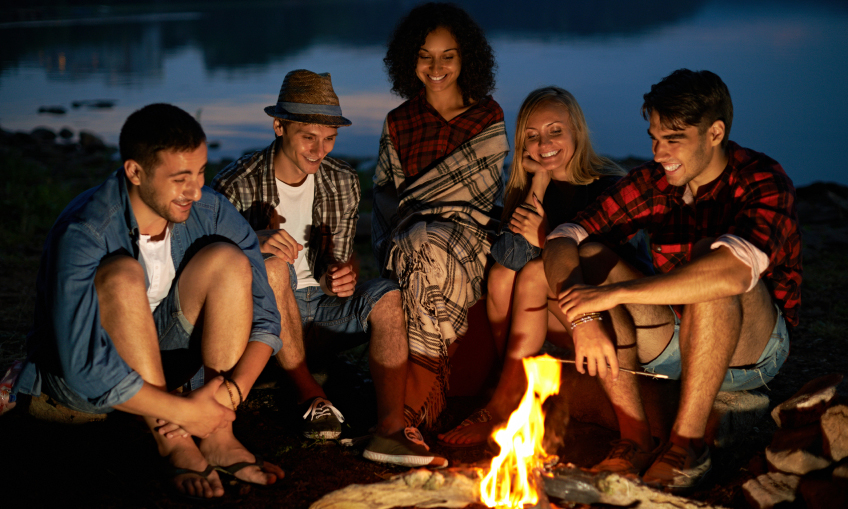Become an eco-leader at this summer camp
A conservation training program teaches students to tackle environmental issues

There might be a campfire night, but the Student Climate & Conservation Congress is more than a summer camp.
mediaphotos/iStockPhoto
Right now, more than 100 high school students are hanging out in Shepherdstown, W.Va. For a week they are sleeping in lodges, hiking and chatting around campfires. But this isn’t your typical summer camp. It’s the sixth Student Climate & Conservation Congress. Here, teens brainstorm ideas to promote sustainable farming, environmental education, recycling and many other conservation-themed activities. The goal is to come up with programs they will be able to start up in their schools and communities back home.
The camp’s goal is to help teens become environmental leaders. “The students are really motivated young people” interested in conserving and protecting the environment, says Steve Chase. He works at the U.S. Fish and Wildlife Service’s National Conservation Training Center in Shepherdstown, which hosts the conservation congress.
Each year, visiting teens address a different question related to environmental protection, also known as conservation. This year’s topic: “How will you be a better global citizen?” Students start by brainstorming topics that might answer this question. Teams write down their ideas and then post them on a wall for all to see. Afterward, the teens whittle down their ideas, seeking the best few. These will guide their efforts for the rest of the week.
Campers spend the remaining days developing action plans they can take back to their high schools. Maybe they will launch a campaign to replace all the cleaning supplies at their school with products that will be kinder to the planet by biodegrading or using fewer resources. Or perhaps they will survey how energy efficient their school is. Then they might work to replace light bulbs or add insulation so their school uses less energy. They might even plant a kitchen garden at school or plant trees to increase their neighborhood’s biodiversity.
Throughout the week, the teens also hear from a wide variety of speakers. These may include Fish and Wildlife Service scientists, wildlife biologists, filmmakers or people who educate adults and kids about the environment. These speakers may participate in helping come up with good action plans. Or they might share their experiences and what they’ve learned by working in programs aimed at protecting the environment. The goal is to learn about possible careers in conservation.
Many students might not think of a career at the Fish and Wildlife Service, Chase notes. His agency is dedicated to conserving and protecting wildlife and their ecosystems. They might help defend endangered species, guard bird migrations, improve wetlands or even hatch fish. This summer program might help put the Service on a student’s radar screen. “We need people doing all sorts of things,” he says. “We need field biologists, social media experts, accountants.” The problem: Right now, very few college students are preparing for conservation-related college majors.
The Green Schools Alliance, based in New York City, is a group of elementary, middle and high schools which promotes conservation activities in its member schools. The organization also runs this program. Its website is already taking applications for next year’s conservation camp. Early application is best, because spots tend to fill very quickly.
Chase says the conservation congress is looking for teens with “vision and determination and grit about conservation issues.” The camp organizers are particularly interested in recruiting students from Green Alliance-affiliated schools. But any school that wants to commit to conservation can join the Alliance and help its students apply for the program. The congress currently costs around $750 for room and board. Some financial aid is available.
Follow Eureka! Lab on Twitter
Power Words
biodegrade The act of breaking down materials into compounds found in nature.
conservation The act of preserving or protecting something, such as ancient art objects in a museum or the health of the natural environment.
ecosystem A group of interacting living organisms — including microorganisms, plants and animals — and their physical environment within a particular climate. Examples include tropical reefs, rainforests, alpine meadows and polar tundra.
endangered An adjective used to describe species at risk of going extinct.
major (in education) A subject that a student chooses as his or her area of focus in college, such as: chemistry, English literature, German, journalism, pre-medicine, electrical engineering or elementary education.
wetland A low-lying area of land either soaked or covered with water. It hosts plants and animals adapted to live in, on or near water.